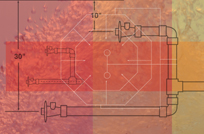ARTICLES
Advance Search
Aquatic Health
Aquatic Health, Fitness & Safety
Around the Internet
Aquatic Culture
Aquatic Technology
Artful Endeavors
Celebrity Corner
Life Aquatic
Must-See Watershapes
People with Cameras
Watershapes in the Headlines
Art/Architectural History
Book & Media Reviews
Commentaries, Interviews & Profiles
Concrete Science
Environment
Fountains
Geotechnical
Join the Dialogue
Landscape, Plants, Hardscape & Decks
Lighter Side
Ripples
Test Your Knowledge
The Aquatic Quiz
Other Waterfeatures (from birdbaths to lakes)
Outdoor Living, Fire Features, Amenities & Lighting
Plants
Ponds, Streams & Waterfalls
Pools & Spas
Professional Watershaping
Structures (Editor's Notes)
Travelogues & History
Water Chemistry
WaterShapes TV
WaterShapes World Blog
Web Links
Around the Internet
Aquatic Culture
Aquatic Technology
Artful Endeavors
Celebrity Corner
Life Aquatic
Must-See Watershapes
People with Cameras
Watershapes in the Headlines
Although the concept is relatively unfamiliar in the United States and largely untested here, pools supported by an entirely natural approach to filtration and water management have been under development in Europe for decades and have caught on there in a big way in recent years. In this special feature, German watershaper and natural-pool expert Rainer Grafinger discusses the ‘technology’ behind this potent European trend. For most people in the United States, swimming is far from a natural experience: Bathers move back and forth in man-made, chemically treated backyard or public swimming pools and seldom (if ever) find themselves in
It seems odd to say it, but I first became involved with this project largely because I happen to live on the same street as my clients. We all live in a beautiful, historic neighborhood in Mountain Lake, N.J., a small town that lays claim to having the largest collection of authentic Craftsman-style homes of any municipality in the United States. It’s the kind of place where residents take immense pride in the architectural splendors you see almost everywhere you turn. Most of these homes were designed and built by the legendary architect and builder
It’s unlikely that anyone back in 1992 would have imagined that the daughter of fashion designer Calvin Klein would change the way we think of swimming pools. That might be a slight exaggeration, but to me there’s no question that Pools by Kelly Klein, first published by Rizzoli 15 years ago and re-released late in 2007, was unique at that time in treating pool design as a legitimate art form. In many ways, in fact, I think her book may well have ignited the design revolution that has unfolded in the years since it was first published. I didn’t run across this oversized volume until 1999, when I attended
It's rare in our fast-paced world when you get the chance to work closely with clients over an extended period of time – and in this case we took full advantage of the opportunity: All the way through the evolution of the project, the couple gave me voluminous information about what they wanted and enabled me not only to understand and deliver what they were after, but also allowed me in many instances to exceed their expectations. I had worked with him before on
Last month, I entered into a discussion of the emergence of a whole range of beautiful finish materials that have helped (in my humble opinion) turn watershaping into an art form. My focus there was on glass and ceramic tile; this time, I want to turn the same sort of attention to plaster and exposed aggregates – huge additional factors in the industry’s ongoing creative momentum. Before I begin, let me draw an important distinction: The artistry in watershaping is not so much based on the types of materials we choose or how special or costly they might be; instead, it has everything to do with
It seems that everyone’s talking about “sustainability” these days, with the usual thought being that, as exterior designers, good environmental stewardship must be one of our main missions. But what is sustainability? What do watershapers need to do to encompass this philosophy? As important, what does it mean to our clients, and where are they in all of this? According the numerous sources I’ve consulted, sustainability is defined as striving for the best outcome for both human and natural environments, now and well into the future. In other words, it’s about
In my November 2007 column, I discussed the power of friendship and how it can enhance our professional and personal lives. Along the way, I used examples from my own career and kept the focus on a personal level. This time around, however, I’ll be broadening the focus and expanding the concept to cover cultural and even global relationships. One of my key points in November was that by surrounding yourself with a circle of diverse, passionate, knowledgeable and thoughtful friends, you
For many people, the devastating wildfires that swept through southern California in October 2007 are just another memory, washed away by the tides of current events. But for those who lost their homes in places like Malibu, Lake Arrowhead and Rancho Bernardo and elsewhere, those horrifying blazes will be part of their daily lives for months and years to come as they struggle to
Designing watershapes of any sort is becoming more and more challenging every day. Where not all that long ago consumers were happy if a pool or spa or fountain or pond simply looked good and operated reliably, there's a new generation of consumers who are much more interested in how these vessels are built and, more specifically, in knowing about how energy efficient they are. This trend is being driven on the one hand by the inevitability of rising utility rates and on the other by legislation such as California's Appliance Efficiency Code (Title 20) - a rule that's attracting the attention of code writers across the country because of the overwhelming importance these days of reducing energy consumption. With that backdrop, this article takes a look at a watershape's main energy consumer and the most basic of all its






















Swimming to Wellness